Deep within the layered canopies of Central and South American rainforests, a silent shadow glides through the trees. With talons larger than a grizzly bear’s claws and a wingspan that can reach up to seven feet, the Harpy Eagle stands as nature’s ultimate aerial hunter. This magnificent bird of prey represents the pinnacle of avian evolution—a perfect storm of adaptations that have transformed it into the undisputed apex predator of the skies. From its exceptional vision and hearing to its incredible strength and hunting strategy, the Harpy Eagle demonstrates how millions of years of evolutionary refinement can produce one of the most formidable hunters on the planet. In this article, we’ll explore the fascinating journey of how this remarkable creature ascended to the top of the aerial food chain and became one of nature’s most impressive predators.
The Ancient Origins of a Sky Giant

The evolutionary story of the Harpy Eagle begins millions of years ago, with its ancestors emerging during the Miocene epoch approximately 10-15 million years ago. Fossil records suggest that the precursors to modern eagles developed in Eurasia before spreading to other continents, with specialized forms evolving to fill specific ecological niches. The Harpy Eagle belongs to the Accipitridae family, which includes hawks, eagles, and kites, and represents one of the most specialized branches of this family tree. Through natural selection, the Harpy Eagle’s ancestors gradually developed the remarkable features we see today, including their immense size, powerful build, and specialized hunting adaptations. This evolutionary refinement occurred specifically to exploit the unique hunting opportunities presented by the dense rainforest canopies of Central and South America.
A Forest Titan: Understanding the Harpy Eagle’s Size
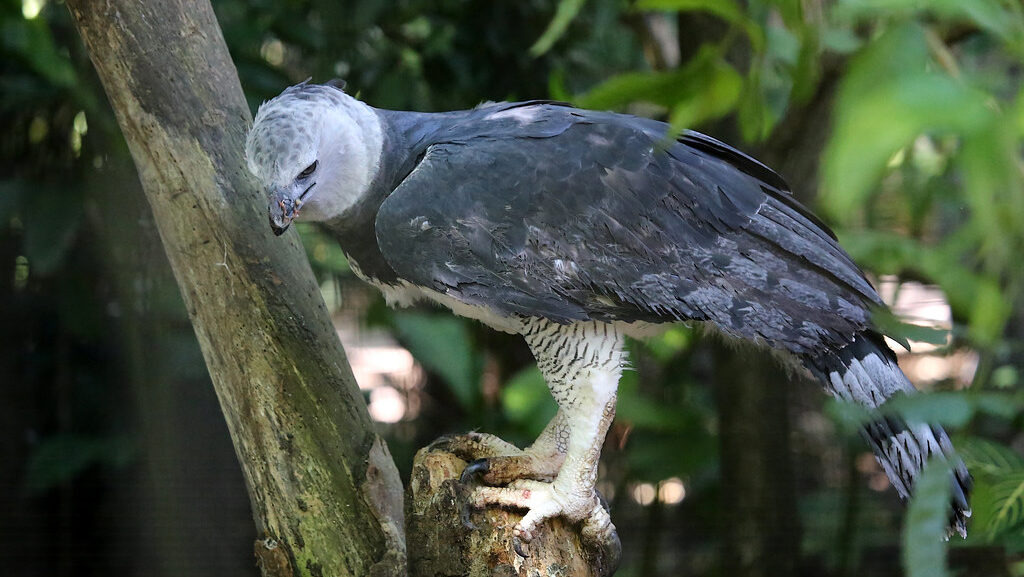
The Harpy Eagle’s imposing physical dimensions play a crucial role in its dominance of the rainforest ecosystem. Female Harpy Eagles, which are typically larger than males, can weigh up to 20 pounds (9 kg), making them among the heaviest eagles in the world, while males generally weigh between 8.5-12 pounds (4-5.5 kg). Their wingspan stretches between 6 to 7 feet (1.8-2.1 meters), allowing them to navigate through forest canopies with remarkable agility despite their size. What’s particularly impressive is their body length, which can reach up to 3.5 feet (1 meter) from beak to tail. These dimensions provide the Harpy Eagle with the perfect balance of size and maneuverability—large enough to take down substantial prey, yet agile enough to weave through the complex forest architecture without sacrificing hunting efficiency.
The Engineering Marvel of Harpy Eagle Wings
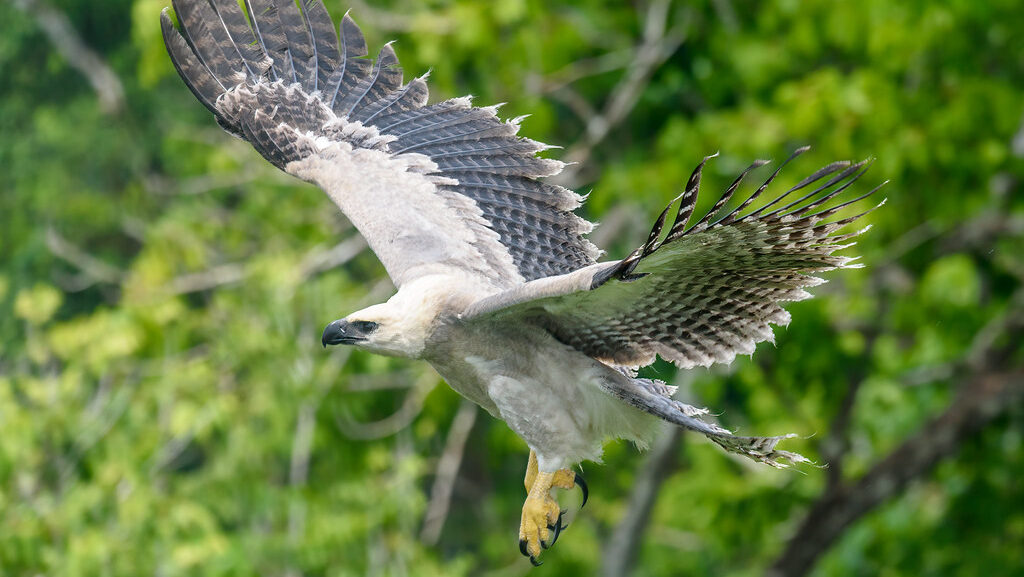
The wings of the Harpy Eagle represent a masterpiece of natural engineering, specifically adapted for their forest-dwelling lifestyle. Unlike eagles that soar high in open skies, Harpy Eagles possess relatively short, broad wings that enable rapid acceleration and precise maneuvering through dense forest canopies. These wings generate tremendous power through specialized flight muscles that make up a significant portion of the bird’s body weight. The unique shape of their wings creates what aerodynamics experts call high-lift airfoils, allowing them to take off vertically when necessary—a crucial ability when hunting in tight spaces. Additionally, their primary feathers can be individually adjusted during flight, functioning similar to the flaps on an aircraft wing, giving the Harpy Eagle unprecedented control over its movement in three-dimensional space.
Deadly Weapons: The Harpy Eagle’s Talons

The Harpy Eagle’s primary hunting tools—its talons—are among the most impressive in the avian world, measuring up to 5 inches (13 cm) in length, comparable to the claws of a grizzly bear. These massive talons can exert tremendous pressure, with estimates suggesting a grip strength exceeding 400 pounds per square inch (psi), powerful enough to instantly crush the bones of their prey. The rear talon is particularly enlarged, functioning as a lethal hook that can pierce a sloth’s skull or spine with a single strike. Beyond their size, the talons possess microscopic serrations that enhance their gripping power, preventing struggling prey from escaping. This remarkable weapon system is controlled by specialized tendons and muscles that allow the eagle to maintain its grip for extended periods without fatigue, ensuring that once prey is captured, escape is virtually impossible.
The Remarkable Hunting Vision of the Sky Predator
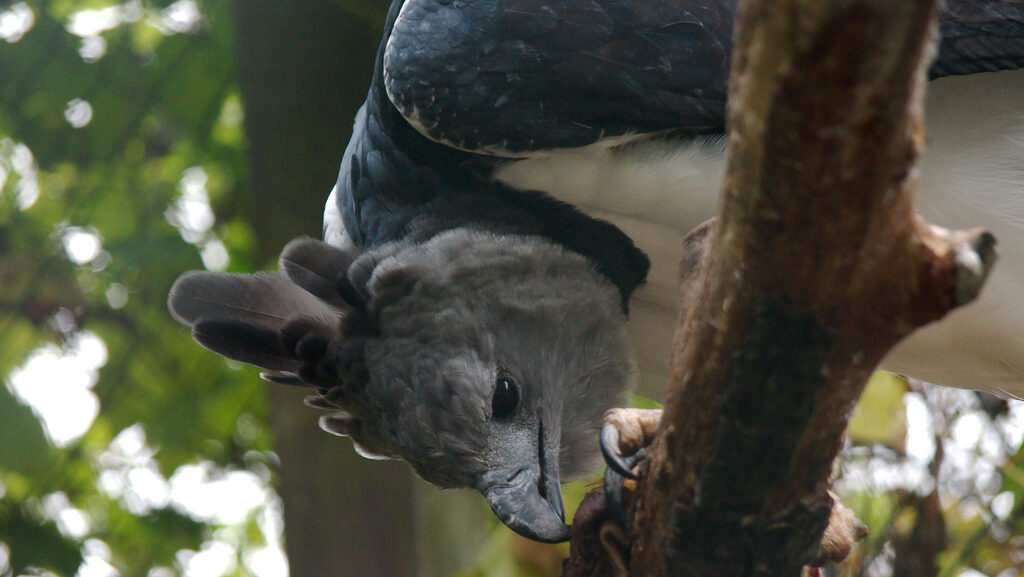
Vision stands as perhaps the Harpy Eagle’s most extraordinary sensory adaptation, with visual acuity estimated to be eight times more powerful than human vision. Their eyes contain approximately five times more light-sensitive cells (photoreceptors) per area than human eyes, allowing them to detect the slightest movements from remarkable distances. Harpy Eagles possess binocular vision with a nearly 180-degree visual field, enabling precise depth perception crucial for accurately judging distances when striking prey at high speeds. Their eyes also contain specialized oil droplets that filter light and enhance color discrimination, helping them spot camouflaged prey against the complex visual backdrop of the rainforest. Additionally, a specialized membrane called the pecten oculi ensures their eyes receive adequate oxygen and nutrients, supporting the high metabolic demands of such sophisticated visual processing.
A Head Designed for Hunting: The Facial Disc
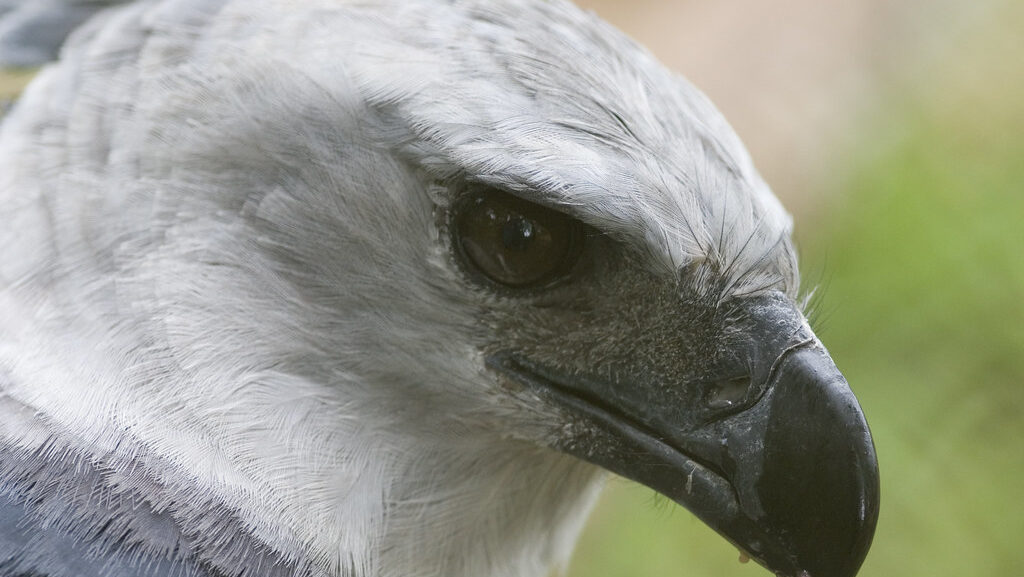
The Harpy Eagle’s distinctive facial features aren’t merely for show—they represent sophisticated adaptations that enhance its hunting capabilities. The eagle’s prominent facial disc functions similarly to a satellite dish, collecting and channeling sound waves to its ear openings, significantly amplifying its hearing capabilities. This adaptation allows them to detect the subtle sounds of prey moving through the canopy, even amidst the cacophony of rainforest noise. Their head can rotate up to 270 degrees, significantly expanding their field of perception without needing to move their entire body—a crucial advantage when stalking prey that might be alerted by movement. The eagle’s pronounced brow ridge not only gives it its fierce appearance but also shades its eyes from glare and enhances visual contrast, functioning similar to the visor on a baseball cap.
The Fierce Power of the Harpy Eagle’s Beak
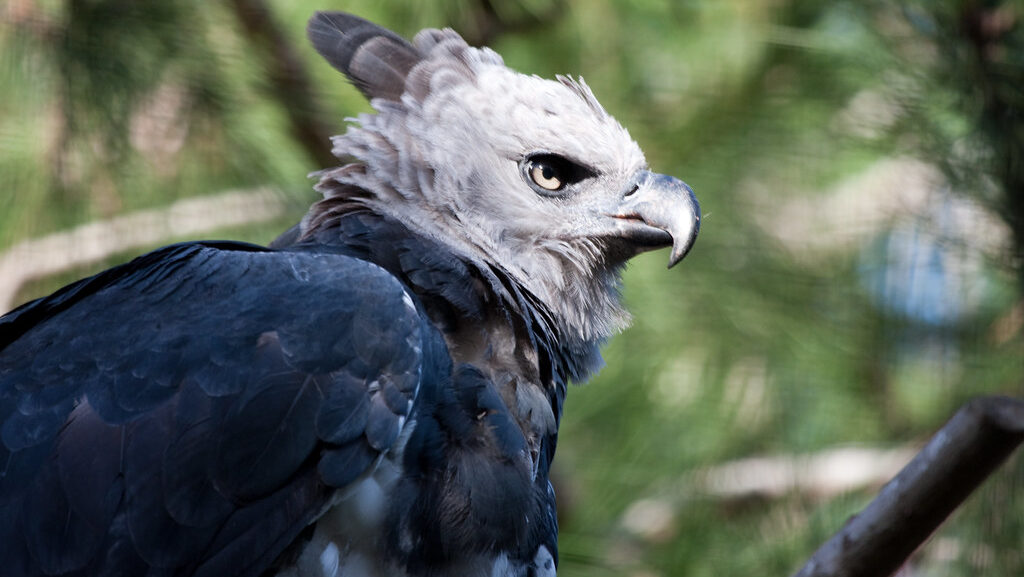
While the Harpy Eagle’s talons deliver the initial strike, its beak serves as a precision tool for dispatching prey and processing food. The massive hooked beak is designed for tearing flesh, with a cutting edge that maintains its sharpness through continuous growth and wear. This powerful instrument can generate enough force to sever the spine of medium-sized mammals and disarticulate joints, allowing the eagle to dismantle prey too large to carry whole. The beak’s curved shape maximizes leverage, functioning like a combination of knife and pruning shears to efficiently process tough tissues. Beyond hunting, the beak serves multiple functions, including grooming feathers, manipulating nesting materials, and feeding young with carefully torn morsels—a testament to its versatility as both weapon and tool.
Masters of Surprise: The Harpy Eagle’s Hunting Strategy
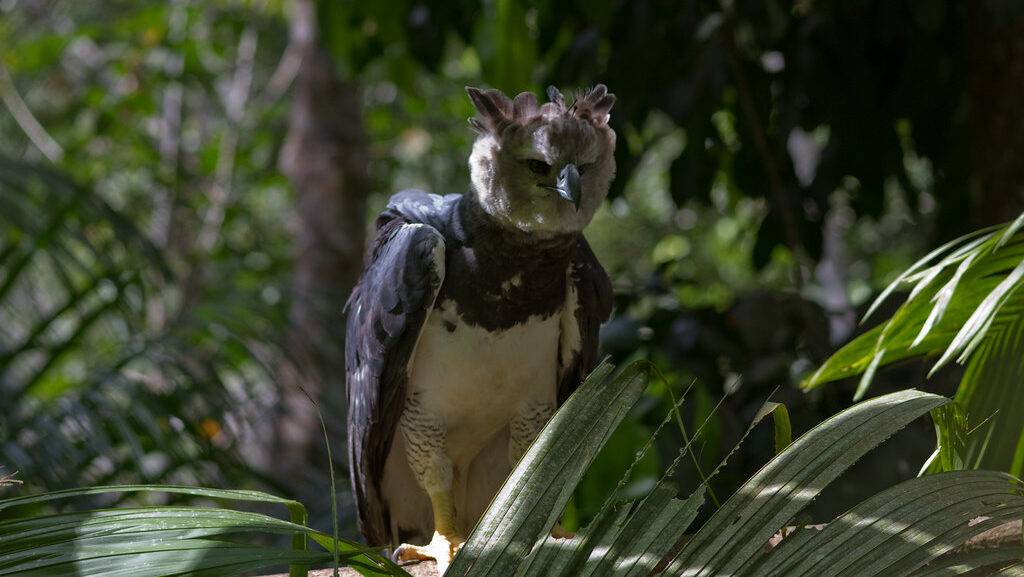
The hunting methodology of the Harpy Eagle demonstrates sophisticated strategic thinking that maximizes its physical advantages. Rather than soaring in open skies like many other eagles, Harpy Eagles employ a sit-and-wait strategy, perching motionless for hours in the middle or upper canopy while scanning for potential prey. When a target is identified, they employ a burst-and-grab technique, accelerating from standstill to over 50 miles per hour (80 km/h) in seconds using powerful wing thrusts. Their approach path often incorporates natural cover, concealing their advance until the final moment, and they typically strike from below or behind to minimize the chance of detection. This ambush strategy relies on the element of surprise and overwhelming force, with most hunts being decided in the first few seconds of engagement—a testament to their evolutionary perfection as forest predators.
The Diverse Diet of an Apex Predator
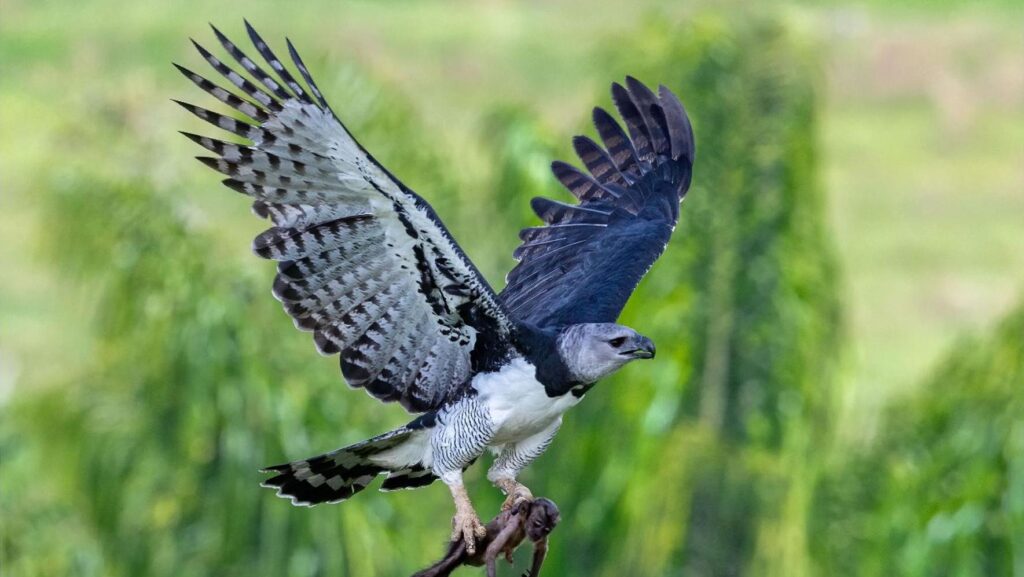
The Harpy Eagle’s diet showcases its versatility as a hunter, consisting primarily of arboreal mammals that few other predators can effectively target. Their preferred prey includes sloths and monkeys, with two-toed sloths and howler monkeys making up approximately 80% of their diet in many regions. Unlike many predators that specialize in hunting a narrow range of species, Harpy Eagles opportunistically take a wide variety of prey, including porcupines, anteaters, coatimundis, opossums, and even reptiles like iguanas and snakes. They can capture prey weighing up to 17 pounds (7.7 kg)—nearly their own body weight—demonstrating extraordinary strength and hunting prowess. Studies of their feeding ecology reveal that a single Harpy Eagle pair may need to control a territory of up to 25 square miles (65 square kilometers) to secure enough prey, highlighting their position at the top of the forest food chain.
Family Dynamics: The Eagle’s Long Reproductive Cycle
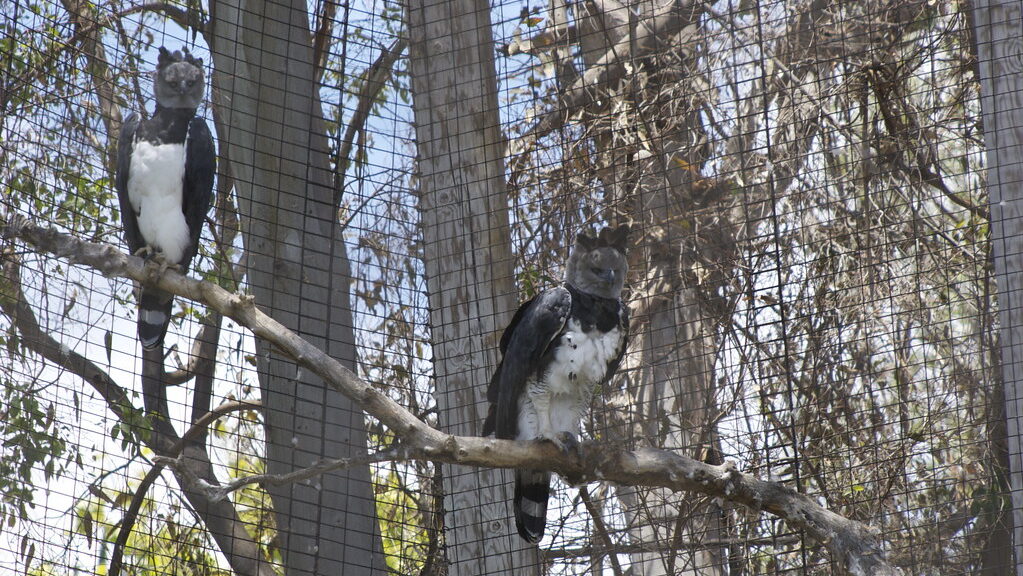
The Harpy Eagle’s reproductive strategy emphasizes quality over quantity, representing one of the longest breeding cycles of any bird species. Mated pairs bond for life and typically produce just one egg every 2-3 years, investing extraordinary parental resources into ensuring the survival of each offspring. The incubation period lasts approximately 56 days, with both parents participating in egg care, though the female handles most of the incubation duties. After hatching, the eaglet requires an astonishing 6-10 months of parental care before achieving independence, during which time the parents deliver food to the nest multiple times daily. This extended developmental period allows juvenile Harpy Eagles to master the complex hunting skills necessary for survival, with parents gradually providing less processed food to encourage the development of tearing and processing abilities in their offspring.
Engineering Marvels: The Massive Nests of Harpy Eagles

The Harpy Eagle constructs some of the most impressive nest structures in the avian world, building platforms that can measure up to 6 feet (1.8 meters) in diameter and 4 feet (1.2 meters) deep. These massive structures are typically placed in the fork of the tallest trees in their territory, often kapok or silk-cotton trees that rise above the surrounding canopy and can support the nest’s substantial weight. Construction of a new nest can take up to 4 months, with both male and female eagles gathering branches up to 2 inches (5 cm) in diameter for the foundation, progressively adding smaller branches and finally lining the interior with soft vegetation, shed fur, and feathers. These nests are engineering marvels, designed to withstand tropical storms and support the weight of adult eagles plus growing offspring, and are typically reused for multiple breeding cycles, with maintenance additions made before each new breeding attempt.
Conservation Challenges: The Vulnerable Status of the Sky Giant
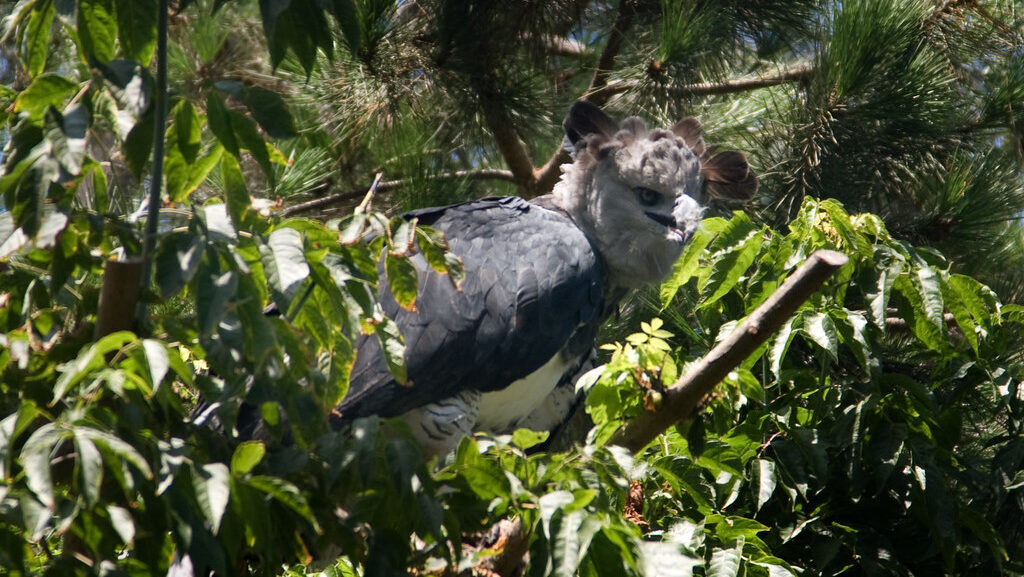
Despite its formidable abilities, the Harpy Eagle faces significant threats that have led to its classification as “Near Threatened” on the IUCN Red List, with some populations considered Critically Endangered. Habitat loss represents the most severe challenge, with approximately 50% of the rainforests within its historic range having been destroyed for agriculture, livestock ranching, and logging. Direct persecution also threatens Harpy Eagles, as they are sometimes shot by farmers believing they pose a threat to livestock, or killed for trophies due to their impressive appearance. Their naturally low reproductive rate compounds these challenges, as populations cannot quickly recover from declines even when conditions improve. Conservation efforts now focus on habitat protection, education programs to reduce persecution, and in some regions, captive breeding with reintroduction programs designed to restore populations in areas where they have been extirpated.
Cultural Significance: The Eagle as Symbol and Spirit
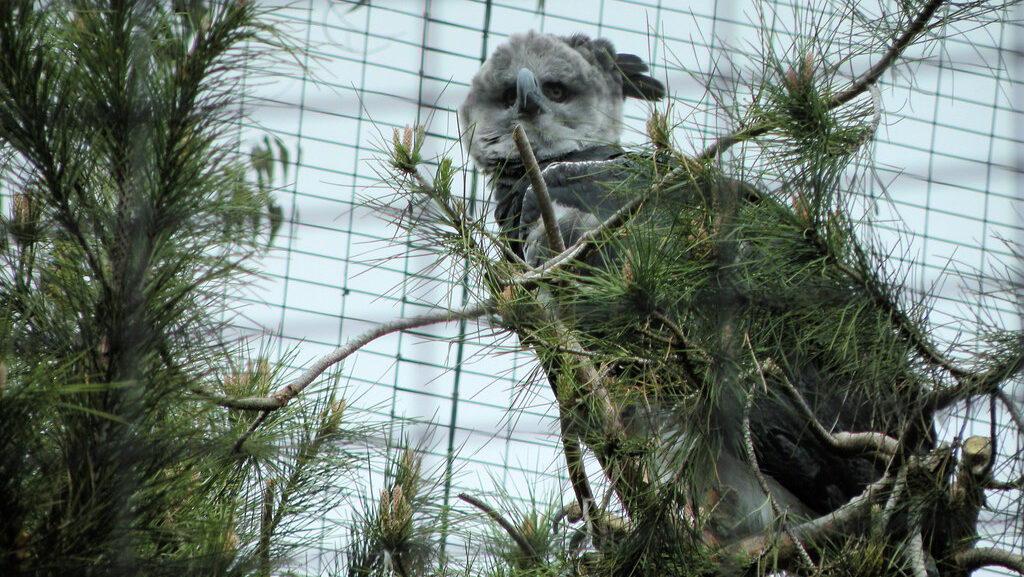
Throughout its range, the Harpy Eagle has deeply influenced human cultures, becoming integrated into mythology, art, and national identity. For many indigenous Amazonian tribes, the Harpy Eagle represents a spiritual bridge between the earthly and celestial realms, often associated with warrior spirits or serving as a totem animal for hunters. The Harpy Eagle appears in ancient Mesoamerican art, including Maya and Aztec imagery, where it was often associated with power and divine authority. In modern times, the Harpy Eagle serves as the national bird of Panama, appearing on coats of arms and currency, symbolizing strength and freedom. Conservation efforts have been bolstered by this cultural significance, with many communities now taking pride in protecting the eagle as part of their natural heritage—a powerful example of how cultural connections can support biological conservation.
Conclusion
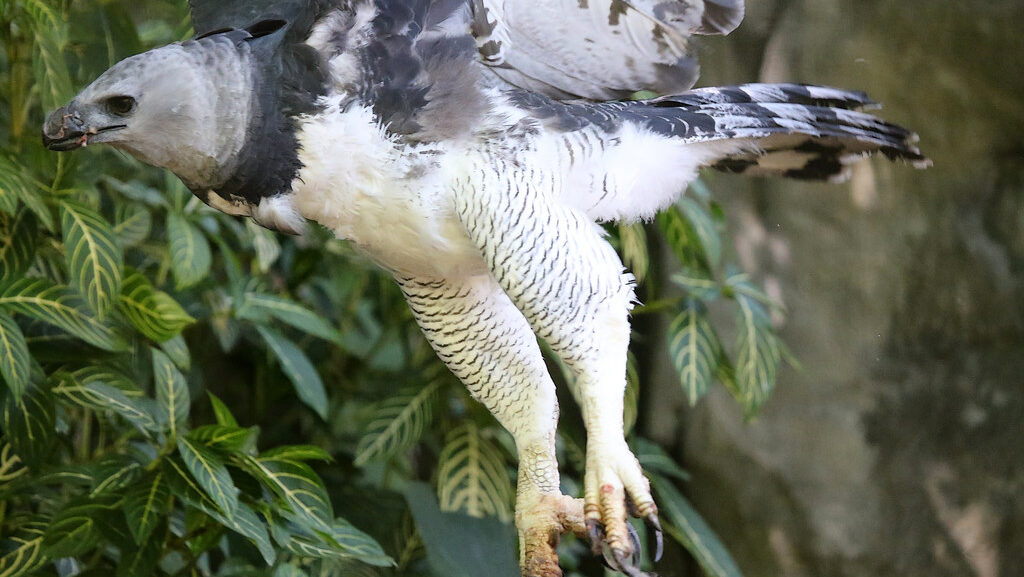
The Harpy Eagle’s reign as nature’s apex sky predator represents a masterpiece of evolutionary adaptation. Through millions of years of refinement, this magnificent bird has developed the perfect combination of physical attributes, sensory capabilities, and hunting strategies to dominate the complex rainforest ecosystem. From its massive talons and powerful build to its sophisticated hunting techniques and specialized diet, every aspect of the Harpy Eagle has been shaped to create the ultimate aerial hunter. Yet, despite its formidable capabilities, this magnificent predator faces an uncertain future due to human activities. As we continue to learn more about these remarkable birds, we gain not only scientific knowledge but a deeper appreciation for the complex evolutionary processes that have produced one of nature’s most impressive predators—a living embodiment of power, precision, and wild majesty that deserves our protection and respect.
